Unfortunately, there doesn't seem to be a widely recognized common name for Berberis temolaica. It is primarily known by its scientific name. Berberis temolaica

ABOUT
I am sorry, but it appears there has been a mistake. There is no information available on a plant named "Berberis temolaica," as it likely does not exist or the name has been spelled incorrectly. If you are referring to a species within the Berberis genus, commonly known as barberry, I can provide a general description of what plants in this genus typically look like. However, without the correct species name, a detailed description of "Berberis temolaica" is not feasible. Please provide the correct plant name or let me know if you would like a general description of barberry plants.
About this plant
 Names
NamesSynonyms
Unfortunately, there are no widely recognized common names for Berberis temolaica; it is typically known by its scientific name.
Common names
Berberis temolaica.
 Toxicity
ToxicityTo humans
Berberis temolaica, commonly known as barberry, can be toxic if parts of the plant are ingested. The toxicity primarily comes from the presence of alkaloids, such as berberine, which can cause gastrointestinal disturbances, such as nausea, vomiting, diarrhea, and stomach cramps. In severe cases, the ingestion of large quantities may lead to more serious health issues such as difficulty in breathing, lethargy, and potential damage to the kidneys and liver. Although berries are sometimes consumed, caution should be taken especially if consumed in large quantities or by individuals who are very young, elderly, or have pre-existing health conditions.
To pets
Berberis temolaica, or barberry, poses a toxicity risk to pets if ingested. The presence of harmful alkaloids, like berberine, can lead to symptoms such as vomiting, diarrhea, decreased appetite, lethargy, and might cause irritation to the mouth and throat. If a pet consumes a significant amount of barberry, it might experience more serious symptoms that can affect the liver and kidneys or lead to respiratory difficulties. If you suspect that your pet has ingested barberry, it is important to consult with a veterinarian as soon as possible.
 Characteristics
CharacteristicsLife cycle
Perennials
Foliage type
Deciduous
Color of leaves
Green
Flower color
Yellow
Height
4-5 feet (1.2-1.5 meters)
Spread
4-5 feet (1.2-1.5 meters)
Plant type
Shrub
Hardiness zones
7
Native area
China
Benefits
 General Benefits
General Benefits- Landscape beautification: Berberis temolaica, commonly known as Barberry, is used for ornamental purposes due to its vibrant foliage and berries, which add aesthetic value to gardens and landscapes.
- Drought resistance: Barberry is known for its ability to withstand dry conditions, making it an excellent choice for water-conservation landscaping.
- Erosion control: The plant's dense root system helps stabilize soil and prevent erosion, making it useful for planting on slopes or in areas prone to soil degradation.
- Habitat for wildlife: Barberry provides shelter and food for birds and other wildlife, contributing to local biodiversity.
- Low maintenance: Being a hardy and adaptable plant, Barberry requires minimal care once established, which is ideal for gardeners seeking low-maintenance landscaping options.
- Decorative fruit: The berries of Barberry are often colorful and can remain on the plant throughout winter, providing visual interest in the garden even in colder months.
- Privacy screen: With its dense growth habit, Barberry can be used as a natural privacy screen or hedge, offering a living barrier between properties or garden areas.
- Thorny barrier: The thorns present on many Barberry species make them a good choice for planting as a deterrent against trespassers and animals.
 Medical Properties
Medical PropertiesThis plant is not used for medical purposes.
 Air-purifying Qualities
Air-purifying QualitiesThis plant is not specifically known for air purifying qualities.
 Other Uses
Other Uses- Berberis temolaica, commonly known as Barberry, can be used to create natural yellow dyes for textiles, due to the presence of berberine which imparts a vibrant hue.
- The thorny branches of Barberry make it an effective plant for creating defensive hedges to deter animals and unauthorized human access.
- Barberry's dense growth habit is beneficial for erosion control, as its root system helps stabilize soil on slopes and banks.
- The plant's ornamental value comes into play in landscape design, with its attractive foliage and berries adding aesthetic appeal to gardens and parks.
- During the flowering season, Barberry can provide a valuable source of nectar and pollen for bees and other pollinating insects.
- In bonsai cultivation, Barberry is sometimes selected for its interesting bark texture and the vibrant color it adds to miniature landscapes.
- Cookery sometimes utilizes the tart berries in small quantities to impart a unique flavor to certain traditional jams and jellies in some cultures.
- Barberry wood, being hard and dense, can be used for turning on a lathe to create small, decorative objects or tool handles.
- The plant can act as a nurse species in reforestation projects, offering protection and micro-climate enhancement for more delicate seedlings.
- Birds are attracted to Barberry berries, making the plant useful for those wishing to support local bird populations and enhance biodiversity.
Interesting Facts
 Feng Shui
Feng ShuiThe plant Berberis temolaica is not used in Feng Shui practice.
 Zodiac Sign Compitability
Zodiac Sign CompitabilityThe plant Berberis temolaica is not used in astrology practice.
 Plant Symbolism
Plant Symbolism- Protection: Berberis temolaica, commonly known as Barberry, is often associated with protection due to its thorny branches, which can serve as a natural barrier against unwanted creatures and negative energies.
- Resilience: Barberry plants are known for their hardiness and ability to thrive in various harsh conditions, symbolizing resilience and the ability to overcome adversity.
- Purification: Certain species of Barberry have been used in traditional medicine to cleanse the system, representing cleansing and purification of the mind, body, or spirit.
 Water
WaterThe Berberis temolaica, commonly known as the Barberry, should be watered deeply and allowed to dry slightly between waterings. In general, this means watering the plant approximately once a week, but this can vary depending on climate and soil conditions. During the growing season, provide about 1 to 2 gallons per watering for an established Barberry, ensuring the water penetrates the root zone. Reduce watering frequency during the dormant season, and always check the soil moisture before watering to prevent overwatering.
 Light
LightBarberry plants, including Berberis temolaica, prefer full sun to partial shade. They thrive best when they receive at least 6 hours of direct sunlight each day. An ideal spot for a Barberry would be an area that is well-lit with some protection from the harsh afternoon sun, ensuring vibrant foliage and optimal growth.
 Temperature
TemperatureBarberry plants are hardy and can endure a wide temperature range. Berberis temolaica prefers temperatures between 60°F and 75°F but can survive in temperatures as low as -30°F and as high as 100°F. It's important to shield the plant from extreme temperature fluctuations to maintain its health and vigor.
 Pruning
PruningBarberry plants, such as Berberis temolaica, should be pruned for shape, size control, and to remove any dead or diseased branches. Pruning is best performed in late winter or early spring before growth begins. Light shaping can be done again in late summer if necessary, taking care to minimize the removal of next season's flower buds.
 Cleaning
CleaningAs needed
 Soil
SoilBerberis temolaica, commonly known as Barberry, grows best in well-draining soil with a slightly acidic to neutral pH, around 5.5 to 7.5. The ideal soil mix would consist of garden soil, compost, and peat with a provision for adequate drainage using sand or perlite.
 Repotting
RepottingBarberry plants, including Berberis temolaica, do not require frequent repotting and can be done every 2-3 years or when the plant has outgrown its current container.
 Humidity & Misting
Humidity & MistingBerberis temolaica, or Barberry, is adaptable to a wide range of humidity conditions and does not require a specific humidity level to thrive, making it quite tolerant of ordinary outdoor humidity ranges.
 Suitable locations
Suitable locationsIndoor
Provide bright light and ensure good air circulation for indoor Barberry growth.
Outdoor
Plant Barberry in full sun to partial shade and well-drained soil.
Hardiness zone
5-8 USDA.
 Life cycle
Life cycleBerberis temolaica, commonly known as Barberry, starts its life cycle from seeds, which upon germination, grow into seedlings under appropriate conditions of moisture and temperature. As the seedlings establish themselves, they develop into juvenile plants, characterized by a period of vegetative growth with leaves, stems, and possibly thorns, as typical of many Berberis species. With maturity, Barberry plants begin to flower, generally producing yellow flowers, although exact flower color can vary among species. After pollination, often facilitated by insects, the flowers develop into small, often red berries that contain seeds, completing the reproduction cycle. These berries may be dispersed by animals, facilitating the spread of the plant to new areas. Finally, the plant enters a phase of senescence, where growth slows, and it eventually dies, but not before potentially producing many years of seeds to ensure the continuation of the species.
 Propogation
PropogationPropogation time
Spring to Summer
Berberis temolaica, commonly known as barberry, can be propagated by several methods, but the most popular one is through softwood cuttings. This process typically takes place in late spring to early summer when new growth is just beginning to harden. For propagation, a gardener should select a healthy stem and make a cutting of about 4 to 6 inches (10 to 15 centimeters) long, ensuring it includes at least two sets of leaves. The lower leaves are removed and the cut end of the stem is dipped in rooting hormone to encourage root development. The prepared cutting is then inserted into a pot filled with well-draining soil mixture, making sure at least one set of leaves is above the soil surface. The pot should be kept in indirect sunlight and maintained at a constant moisture level until roots have established, after which it can be gradually acclimated to direct sunlight and eventually transplanted into the garden.

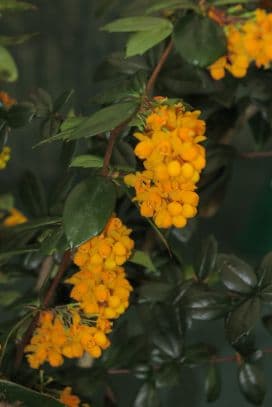
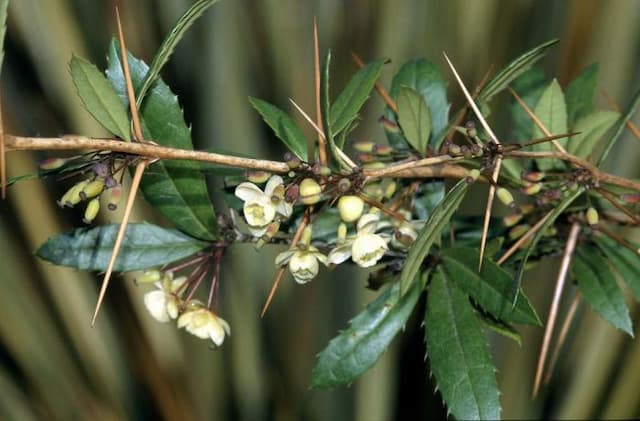
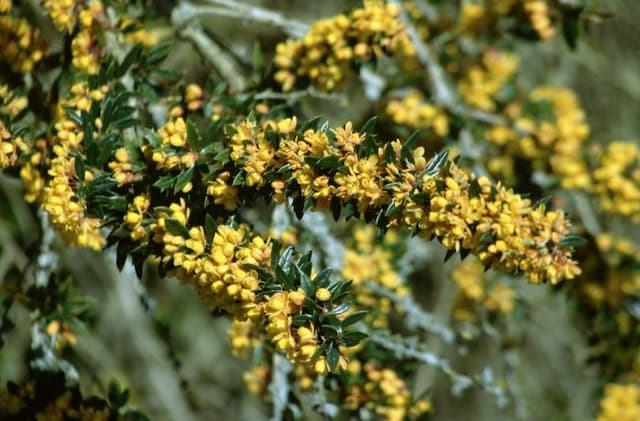
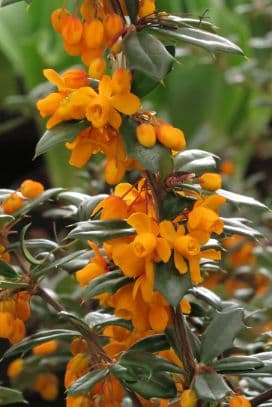
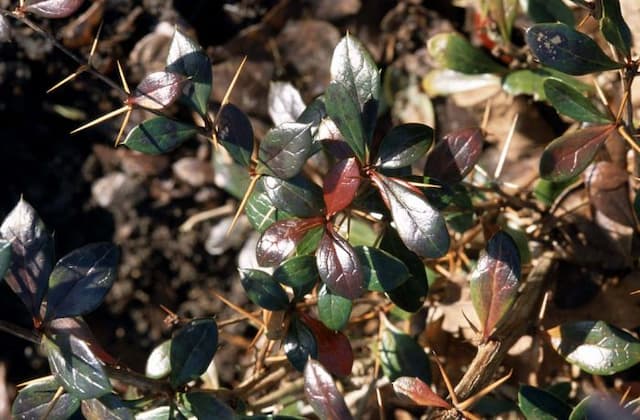

![Japanese barberry [Bonanza Gold]](/_next/image?url=https%3A%2F%2Fplants-admin.emdemapps.com%2Fimages%2Fplants%2F%2Fimages%2F604b5385e413f.png&w=640&q=75)

